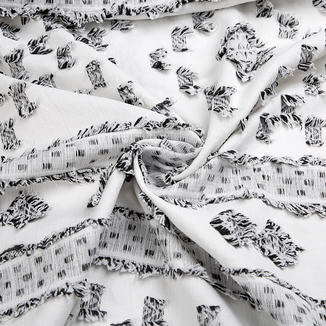Premium quality since 2002!
Brushed cloth is a textile category defined by a finishing process that elevates its texture, comfort, and performance. Far from being a single fabric type, “brushed cloth” encompasses a wide range of materials—from cotton to synthetics—all unified by a mechanical treatment that raises the fibers on the surface, creating a distinctive, soft pile.
The Process: How Fabric Becomes Brushed Cloth
The creation of brushed cloth involves a specialized finishing technique. After a fabric has been woven or knitted, it is fed through a machine equipped with rotating wire brushes or cylinders covered in abrasive material. These brushes gently yet effectively abrade the surface of the fabric, pulling up tiny, loose fibers from the yarns.
This action breaks the uniformity of the surface and creates a layer of fine, soft “fuzz” or nap. The extent of the brushing can vary; some fabrics, like flannel, are brushed on both sides, while others, such as brushed twill, may only be treated on one side. This critical step fundamentally changes the hand-feel, transforming a relatively plain textile into a comforting brushed cloth.
Key Benefits and Properties of Brushed Fabric
The physical alteration of the surface grants brushed cloth several desirable properties:
- Exceptional Softness (Hand-Feel): The primary and most noticeable benefit. The raised fibers give the fabric a pleasant, peach-skin like texture, making it highly comfortable for direct skin contact.
- Enhanced Warmth (Insulation): The nap created by brushing traps air effectively between the fibers. This trapped air acts as an insulating layer, significantly improving the fabric’s thermal retention properties without adding substantial weight. This makes brushed cloth ideal for cold-weather apparel.
- Improved Aesthetics: Brushing can soften the appearance of a weave and often results in a subtle, appealing matte finish.
- Reduced Pilling (Depending on Base Fiber): For certain fibers and weaves, brushing can pre-emptively remove loose fibers, potentially reducing future pilling, though this depends heavily on the quality of the base material.
Diverse Applications Across Industries
The versatility of brushed cloth allows it to be utilized across numerous sectors, proving its value far beyond basic apparel.
Home Textiles
In home furnishings, perhaps the most recognizable form of brushed cloth is brushed cotton flannel. It is the go-to material for high-quality bedding, particularly sheets and duvet covers, where its supreme warmth and softness are highly valued during winter months. Other applications include bathrobes and soft throws.
Apparel and Fashion
Brushed fabrics are staples in casual and cold-weather clothing:
- Brushed Fleece: Often made from polyester, this highly insulating, lightweight brushed cloth is the backbone of activewear, jackets, and sweatshirts. The brushing process on synthetic fibers enhances breathability while maintaining thermal properties.
- Brushed Twill/Denim: When applied to heavier fabrics like twill or denim, brushing softens the fabric’s stiff hand, making new garments feel comfortable and “broken-in” from the first wear.
- Outerwear Linings: Brushed knit fabrics are frequently used as linings in gloves, hats, and the inside of pockets to provide a warm, comfortable interior touch.
Technical and Industrial Uses
Beyond consumer goods, specific types of brushed cloth are used for technical applications, such as specialized polishing cloths for optics and delicate surfaces, where the fine fibers ensure a scratch-free cleaning action.
Conclusion
The transformation from plain textile to brushed cloth is a testament to the power of finishing processes in textile engineering. By mechanically enhancing the fiber surface, manufacturers create a material that is universally associated with comfort, warmth, and luxury. Whether used for a cozy pair of pajamas, high-performance fleece wear, or luxurious bedding, brushed cloth remains a fundamental, high-value component in the world of fabric.

 English
English 简体中文
简体中文










